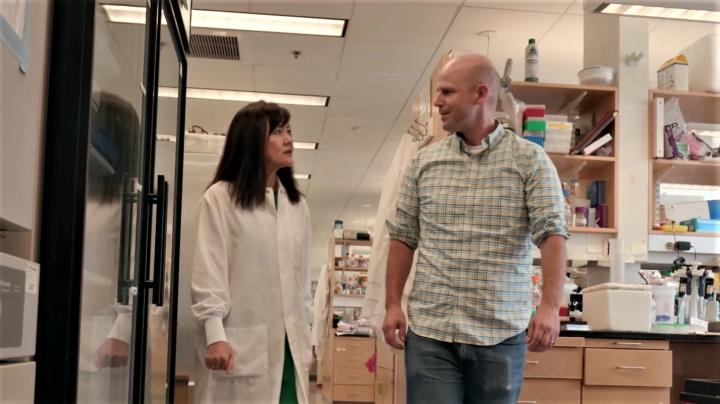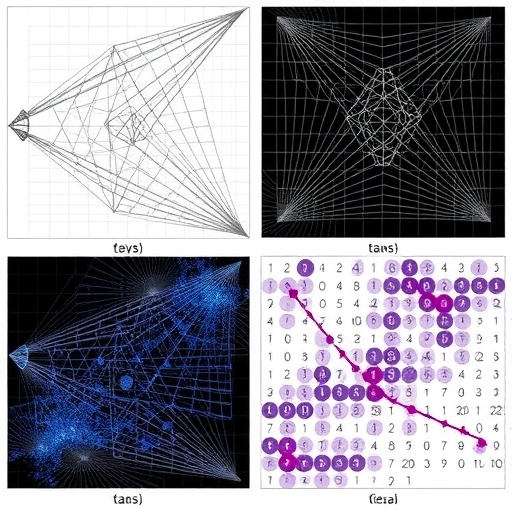
Credit: The Picower Institute for Learning and Memory
The complexity of Alzheimer’s disease, which affects many types of cells in the brain including its blood vessels, has proven difficult to recreate in the lab. With a new $5.6 million, five-year grant from the National Institutes of Health, MIT neuroscientists at The Picower Institute for Learning and Memory will develop a multicellular integrated “brain-on-a-chip” to model the disease’s complexity with novel technologies, providing a powerful testbed for personalized disease and treatment research.
The lab of Picower Professor Li-Huei Tsai will develop their miBrain-chip platform starting from a crucial component that Alzheimer’s models typically omit: blood vessels that faithfully replicate the function of the blood-brain barrier (BBB), which stringently filters the material that enters or leaves the brain through the circulatory system. In work leading up to the new grant, Tsai lab postdoc Joel Blanchard successfully engineered and validated such an in vitro BBB from patient-derived stem cells. Moreover, he made versions with the Alzheimer’s risk gene variant APOE4, showing that it recapitulates the same vascular problems, like cerebral amyloid angiopathy, seen in Alzheimer’s patients.
“We are going to start off with the BBB, which is rather novel,” Tsai said. “We will build on top of that, adding other cell types in the system. There are a lot of questions we can ask with this system that we could not with others. We can use this model to reconstitute certain pathology that’s well known to be present in the Alzheimer’s brain.”
In collaboration with the lab of Robert Langer, David H. Koch Institute Professor in the Departments of Chemical Engineering and Biological Engineering and the Koch Institute at MIT, Tsai and Blanchard will integrate the BBB into a chip system including the crucial cell types of neurons, microglia immune cells, and oligodendrocytes, which maintain the efficiency of neural circuits through a process called myelination. The brain’s immune response and myelination both appear to be compromised by Alzheimer’s disease.
“This new model includes most of the cell types of the human brain so it will provide insight into how they interact and how those interactions change during the progression of the disease,” Blanchard said. “We can make all the cells from any individual and then modify their genes or test potential therapeutics. It could be akin to an in vitro clinical trial.”
In the first two years of the grant, the team will develop and validate the chip platform’s ability to replicate both healthy and diseased states. If that’s successful, they will then begin to use it for a variety of experiments.
In one line of research proposed in the grant, the team will make miBrain-chips from tissue samples of men and women who lived with Alzheimer’s disease and a group of otherwise similar people who did not have the condition. They will work with MIT Computer Science Professor Manolis Kellis to build computational models that track changes in gene expression, cell dynamics and other crucial data so that they can meticulously track and analyze the disease progression in the chip system, comparing it to related data in the individuals’ medical histories. They can also examine the effects of potential treatment interventions in copies of those systems and track their effects.
“These longitudinal pathological maps from genetically diverse healthy and sporadic Alzheimer’s disease individuals will yield mechanistic insight into Alzheimer’s disease development and create a platform for discovery and efficacy screening of therapeutics,” according to the grant abstract.
In another set of experiments using the platform, the team plans to specifically engineer chips in which the sole difference is the presence of APOE4 vs. the more typical APOE3 gene variant. They will not only see the difference the riskier variant makes but also be able to try ways of combating its ill effects. At least 40 percent of Alzheimer’s patients, Tsai said, carry the APOE4 variant.
The system, once developed, should allow for other similar experiments, Blanchard said.
“APOE4 is an important place to start that will likely reveal promising new therapeutic opportunities,” he said. “Future studies beyond this grant will broaden out the application of this technology to other risk factors.”
###
Media Contact
David Orenstein
[email protected]
Original Source
https:/




